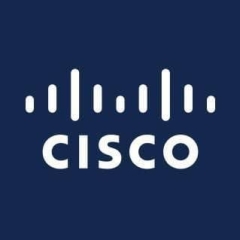Our primary use for this solution is in our data center.
This is a modern, next-generation solution, and it is where the platform is going.
I have been told that this is an easy solution to configure, but we are just starting to deploy it, so that is to be determined.
ACI is not simple, by any stretch of the imagination.
We are not following the application-centric approach, but a network-centric approach instead. It would be nice if I could specify network-centric in my design, and the system would organize and set itself up in that way. Essentially, once you go into the GUI for the first time it would prompt you, and it would build out the infrastructure to accommodate your choice.
Recently purchased.
We have been in a lot of sessions with them and have done a lot of work with it in the lab. We've seen it grow over time. The early versions of the code were buggy and flakey, but as they have gone through newer iterations, we've seen it get better. It is at the point now where were are comfortable with it going into a production data center.
Scalability is definitely something that we're looking at, and it's one of the attractive features of ACI for us. It is easy to do.
The way ACI works is it is one configuration interface. If you want to add more then you just plug it in. I would not call it plug-and-play, but they've made it to the point where it is very close.
This is important to us because we just don't know how our business is going to grow, and change, over time. It's a moving target for us. If we buy something today, and then there is a demand for more capacity in the data center, then we just have to buy more devices and plug them in. We don't have to do anything else. The infrastructure just becomes available for us to use. This differs considerably from the traditional Cisco, which involved a lot of command lines and configuration.
We have not really dealt with technical support, yet. We are using the Cisco professional services to help us with the design and configuration.
We were using the Cisco 9000 and we reached a point where investment was needed due to depreciation in our infrastructure. We needed to get rid of the old system, and then decide whether to stay with the Cisco 9000 or move to ACI. For us, we decided to employ a hybrid solution that uses both.
The initial setup of this solution is pretty straightforward. It is a plug-and-play type of solution where you can just take it out of the box and connect the wires.
Once this system is in place then it becomes complicated. However, the initial go at it is pretty straightforward, which is nice.
We are using Cisco professional services, as well as a VAR, to help us with the implementation. In order for us to go live, we have to make sure that our VAR is ready to support that.
It is too soon for us to realize ROI.
We're a Cisco shop, so we did not evaluate solutions from other vendors. We already have our partner for purchasing, and all of our relationships were already established. For us, it was simply a design decision between Cisco 9000 and ACI.
We are currently testing this solution in a lab, preparing for our deployment into production.
We are not ready to approach this solution in an application-centric way. It's a great overall architecture, good scalability-wise, easy to configure, and a central configuration, but there are too many knobs to turn.
We were originally going to use ACI for everything. However, after we really started looking at the design and having conversations with our Cisco advanced services team, we saw that it made sense to use a hybrid solution.
My advice for anybody interested in implementing this solution is to have a good look at your data center, your architecture, and importantly your operational and support team. If you have people who are familiar with the traditional way of doing Cisco, and have never touched ACI before, then there is a steep learning curve ahead. The operational team will have to ramp up and be educated. That was definitely a factor for us.
We have a third party operational team, and we had to challenge them. We asked if it was something that they could do, and they needed to prove it to us, first. This was done before we even went into the solution. The number one thing is that you have to be able to support it. If you have only two people installing it, then you're not going to be able to run support 24/7 for when something breaks at three in the morning.
This is a good solution, but I would really like to see the network-centric philosophy of configuration to be a little bit easier. The learning curve is steep. But, being somebody who has been traditional Cisco, iOS, and command line, I can say that this is completely different. It is a complete re-write of everything that you've ever thought of from a networking standpoint. It can simplify your life if you do it right.
I would rate this solution a seven out of ten.




